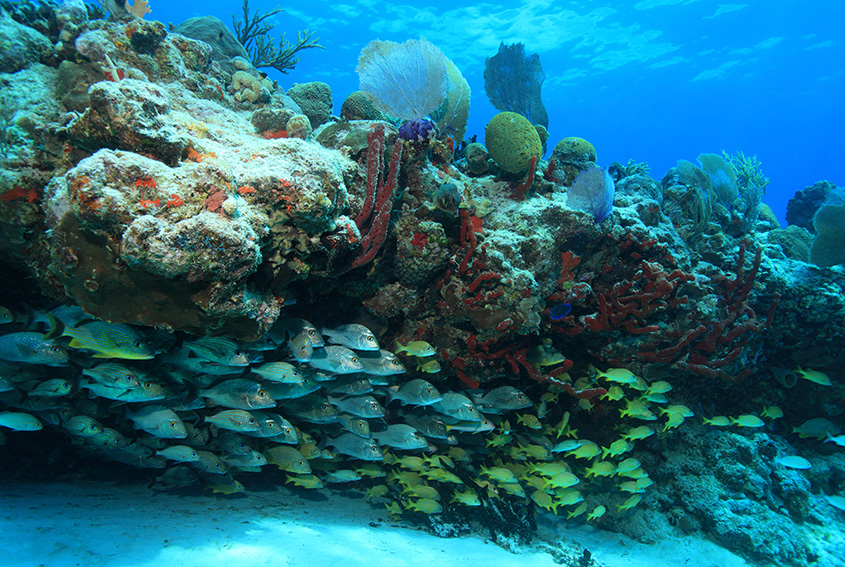The Travel Gallery
Here’s our monthly gallery showcasing some of the region’s many natural and historical attractions. How many have you visited? Which ones would you like to explore on future visits to Cancun and the Riviera Maya?

Cozumel
It only takes 30 minutes from Playa del Carmen to make the ferry crossing to Cozumel, Mexico’s largest inhabited island and one of the world’s leading scuba diving destinations. Cozumel offers spectacular reefs, lovely beaches, lagoons and jungles and is steeped in the history of the ancient Maya, Spanish conquistadores and Caribbean pirates.
Most visitors to Cozumel are drawn by its coral kingdom, a chain of more than 25 magnificent reefs off the west coast that was made famous by Jacques Cousteau. Huge coral buttresses and walls festooned by sponges and gently waving sea fans are honeycombed with caves and canyons and inhabited by 300 species of fish and other colorful marine life. Water visibility is as high as 200 feet and the current enables divers to practice drift diving and literally glide past coral walls and drop-offs.
Punta Maroma
Between Puerto Morelos and Playa del Carmen, Punta Maroma is one of the Mexican Caribbean’s most beautiful beaches. Spend the day basking on the sand, swimming or snorkeling. Kayaks and catamaran trips are also available from the marina
Dzibilchaltun
Just north of Mérida en route to the port of Progreso, this archaeological site was continuously inhabited from 1000 B.C. up to the Spanish Conquest. The most important building is the Temple of the Seven Dolls which was aligned by the ancient Maya to catch the rays of the rising sun on the spring and fall equinox. There is a cenote and a colonial chapel and the Museum of Mayan People, open from Tuesday to Sunday.
Hacienda Yaxcopoil
Located 33 km from Mérida on Highway 261, the highway to Uxmal, a Moorish double arch marks the entrance to Hacienda Yaxcopoil or “place of the green poplars” in Maya. Founded in the 17th century, it was originally a cattle ranch and at its peak in the 19th century had 11,000 hectares of pastures and henequen fields. The estate house is open to the public and still has its turn of the century furnishings, right down to the brushes on the dressing table and the books and maps in the library.
The original machinery used to process the henequen can still be seen in the machine house and the workshops are hidden behind an impressive Classic façade with female statues representing the four seasons. Mayan ruins, including a ball court, dot the estate and pottery, sculptures and other artifacts unearthed in the area are on display in the Maya Room, one of the halls in the estate house.
Your Concierge can help you arrange tours to these locations and many more throughout the Yucatan Peninsula.






